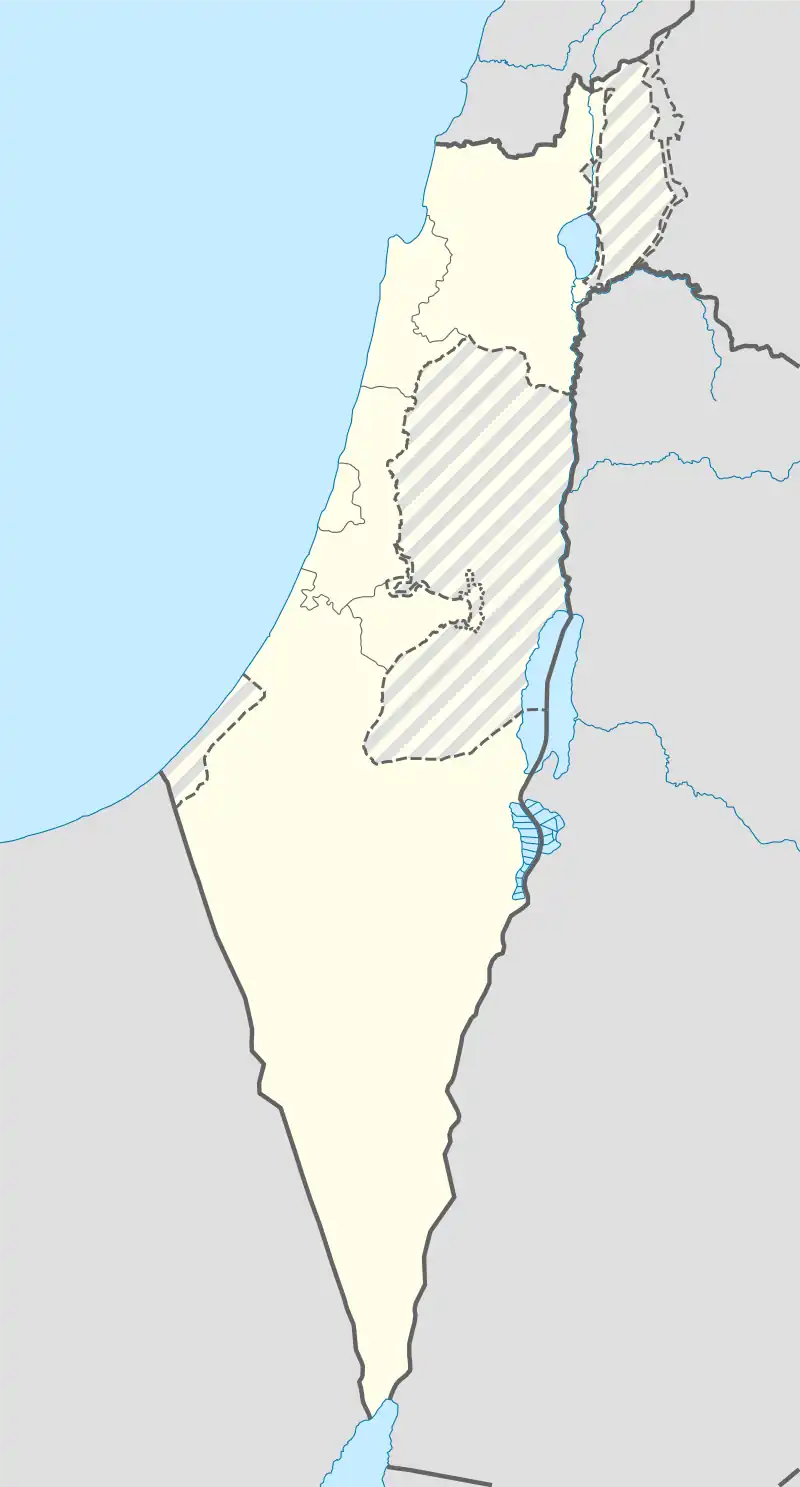חורבת עוזה | |
 Hurvat Uzza, overlooking Kina River at Arad Valley, Israel. | |
 Shown within Israel | |
| Location | |
|---|---|
| Region | Negev |
| Coordinates | 31°12′33″N 35°09′56″E / 31.20917°N 35.16556°E |
| Type | Fortress |
| History | |
| Periods | Iron Age |
| Cultures | Judahites |
Horvat Uza (Hebrew: חורבת עוזה) is an archaeological site located in the northeast of the Negev desert in Israel. The site is located in the east of the Arad Valley and overlooks Nahal Qinah (Qinah Valley). In ancient times, forts were established there to control the wadi road, linking Judea to Arabah and the territory of Edom. It was mentioned as Qina by Josephus in book 15 of his Antiquities.[1]
Several inscribed potsherds with inscriptions in Hebrew, dated to the 7th-century BCE, were found in Horvat Uza.
Archaeology
The site was first excavated in the 1950s by Nahman Avigad. The excavations revealed that the site was inhabited from the Iron Age II (9th-6th centuries BCE) until the Byzantine period (4th-7th centuries CE). The site was abandoned in the 7th century CE, possibly due to the destruction of the Kingdom of Judah by the Babylonians.[2]
The most notable finds from the site are a number of inscribed potsherds with inscriptions in Hebrew. The inscriptions date to the 7th century BCE and mention the name of the site, “Uza”. The inscriptions also mention the names of several people, including a man named “Ahaz” and a woman named “Ataliah”.
References
- ↑ Mittmann, Siegfried (2006). "Die Hellenistische Mauerinschrift von Gadara (Umm Qēs) und die Seleukidisch Dynastische Toponymie Palästinas". Journal of Northwest Semitic Languages (in German). Department of Ancient Studies: Stellenbosch University. 32 (2): 32. ISSN 0259-0131.
- ↑ "The Excavations of Khirbet er-Rasm, Israel: The changing faces of the countryside 9781407307428, 9781407337357". dokumen.pub. Retrieved 2023-08-04.
External links
- "Inscribed potsherd (ostracon), Horvat Uza, Iron Age II, 7th century BCE, Ink on pottery". The Israel Museum, Jerusalem. Retrieved 27 May 2021. Photo of Horvat Uza ostracon, inscribed with the text "Ten: Menahem son of H[…]; Neryahu son of Semak[yahu]; Neryahu son of Mishk[an]ya[hu]; Netanyahu son of Hoteb; Uriyahu son of Shelem[yahu]; Gedalyahu son of Uriyah[u]; Yadinyahu son of Shephat[yahu]; Hoduyahu son of […]."